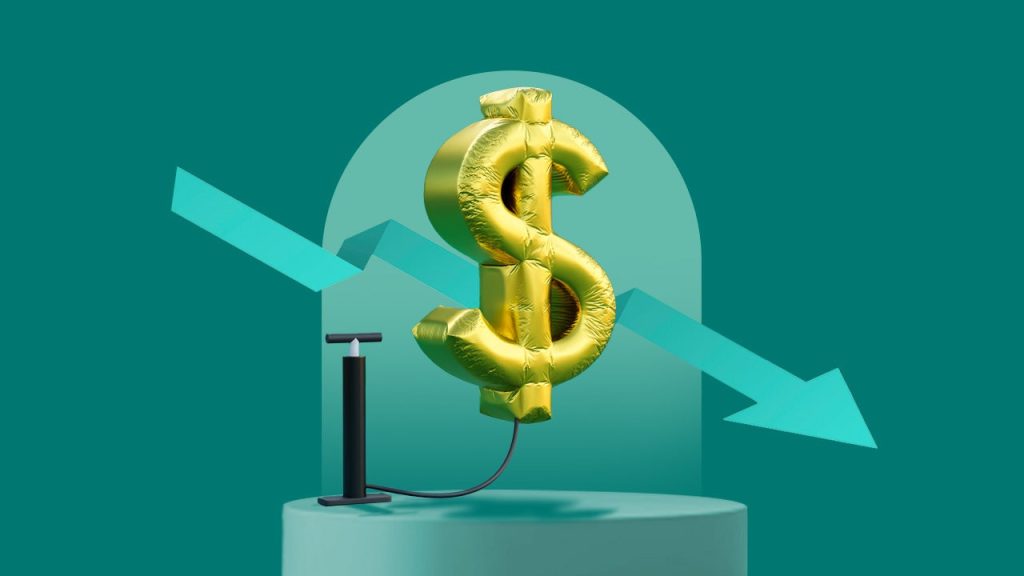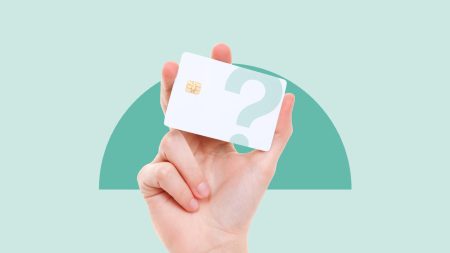The annual rate of inflation has reached its lowest level in four years, according to the consumer price index (CPI) report released Thursday. The 12-month inflation rate decreased in March to 2.4 percent from February’s rate of 2.8 percent. Prices fell on gasoline, used cars and trucks, auto insurance, airfare and recreation. Meanwhile, prices rose on food, medical care, new vehicles and clothing.
These numbers don’t include any potential fallout from President Donald Trump’s trade tariffs. Although many such tariffs were paused by Trump for 90 days on April 9, increased tariffs could drive up inflation when implemented, according to economists.
With fears of inflation and recession looming, it’s common to worry if you have enough saved or if your money is in the right account. When many things feel uncertain, one factor under your control is the ability to maximize your savings in an account with a rate that’s outpacing inflation — and right now, you can do that with a high-yield savings account or a high-yield certificate of deposit (CD). As a saver, it pays to stay vigilant, understand how moves in inflation might impact your future interest earnings and find ways to boost your savings in these uncertain times.
How inflation impacts savings account rates
The rate of inflation often indirectly impacts the annual percentage yield (APY) banks offer on competitive savings accounts, money market accounts and CDs.
The Federal Reserve will change the federal funds rate in response to inflation, and deposit account APYs often move in lockstep with the federal funds rate.
For instance, officials hiked the federal funds rate 11 times in 2022 and 2023 to combat soaring inflation. In turn, some banks, especially online-only banks, boosted their savings account APYs to multi-year highs above 5 percent. While top APYs have retreated somewhat since the Fed lowered the federal funds rate in late 2024, they’re still above 4 percent, which more than surpasses the 2.4 percent annual rate of inflation. While savings accounts have variable yields, which can change at any time, they’re always a good place to store your emergency fund.
Shield yourself from inflation with a high-yield savings account
It’s important to have your money in a high-yield savings account that’s outpacing inflation because if you don’t, your money is losing purchasing power, says Matthew Goldberg, Bankrate senior consumer banking reporter. And it pays to shop around for the best savings account APY.
“Say you had a $20 bill in March 2020 and you put that $20 bill in a drawer and didn’t touch again until now,” Goldberg says. Back then, that $20 bill could purchase $20 of goods and services. But now you’d likely need around $24.78 — per the Bureau of Labor Statistics CPI Inflation Calculator — to purchase the same goods and services.”
The biggest banks often pay rock-bottom rates of 0.01 percent APY, but you can find rates more than 400 times greater on the best high-yield savings accounts. These can usually be found at online banks, which don’t pay to maintain branches and may pass along the savings to customers in the form of higher APYs.
The additional return available in a federally insured high-yield savings account is the only free lunch in finance as it comes without having to take any risk to get it. The difference in rates available is the difference between staying ahead of inflation or trailing it badly.
— Greg McBride, CFA
Bankrate Chief Financial Analyst
You’ll want to keep an eye on your savings rate, though, as it can change. If rates start falling and your APY dips below the rate of inflation, see if there’s a savings account out there that’s still beating inflation. Often, the banks that have the highest yields in a high-rate environment will continue to have the highest yields even as rates go down.
Eventually, even the top savings account rates could fall below the rate of inflation. Although you’d be losing purchasing power, a federally insured savings account will remain a safe, easily accessible place for your emergency fund, which should always be in a liquid account. So when you go to choose an account, make sure it’s at a bank protected by the Federal Deposit Insurance Corp. (FDIC) or a credit union protected by the National Credit Union Administration (NCUA). At a federally insured institution, your deposits are protected up to $250,000 per depositor, per insured institution and per ownership category.
Like high-yield savings accounts, the best money market account rates are also currently outpacing the rate of inflation. Money market accounts provide easy access to your funds for emergencies, with some offering debit cards and checks.
Consider a certificate of deposit
If you prefer a guaranteed APY rather than one that may decline at any time, a CD may be the right option to house some of your savings. Unlike savings accounts, CDs pay a guaranteed rate of return for a set time. In exchange for that guarantee, you promise to lock up your funds for that same amount of time (or pay a penalty for early withdrawals). This is why CDs aren’t a good option for an emergency fund.
While rates on competitive CDs have also fallen in response to the Fed lowering the federal funds rate last year, the best CD APYs are still above 4 percent.
“CDs may be an appropriate option based on your savings objectives and anticipated need for the funds,” says Derik Farrar, Head of Personal Deposits at U.S. Bank. “With market interest rates expected to decline this year, locking in current CD rates may be beneficial as financial institutions are likely to reduce future offerings.”
Locking in a CD rate, especially a long-term one, has benefits in a falling rate environment. But right now, due to an inverted yield curve, some CDs with shorter terms are earning higher APYs than their longer-term counterparts, Farrar says.
Find ways to increase your savings
With daily headlines that tell of inflation, high tariffs and a 1-in-3 chance of recession, it’s easy to feel uncertain about where the economy is headed. As such, it’s a good time to get your finances in order by building up your emergency fund and taking stock of your spending. Here are some simple ways you can start to save more money today:
-
Shop around for the best savings account rate. The best APYs on savings accounts are currently above 4 percent. Depending on your balance, a high-yielding account could earn you hundreds, if not thousands, more in interest than an account with a rock-bottom rate.
-
Automate your savings. Setting up automatic transfers from your checking to your savings account can help ensure you save money regularly. Not only does this save the time and effort of making the transfer manually, but it also helps you avoid using potential savings for impulse purchases. But be sure to leave enough funds in your checking account to cover bills and other expenses.
-
Use a budget to spend less and save more. Listing out your income and expenses allows you to see how much you have left over for savings each month. You can make your budget using pencil and paper, a spreadsheet or a handy budgeting app that enables you to automate much of the process. Once you have a budget in place, follow your spending closely and see if you can identify areas where you can cut out expenses, whether it’s finding cheaper insurance coverage or canceling streaming services you no longer use.
Bottom line
While high-yield savings accounts are still outpacing inflation, keeping your money in one means you’re protecting your purchasing power and earning interest on funds that can help you weather the unexpected. This can provide valuable peace of mind, especially during uncertain times when policies that affect the economy are changing frequently.
Read the full article here









